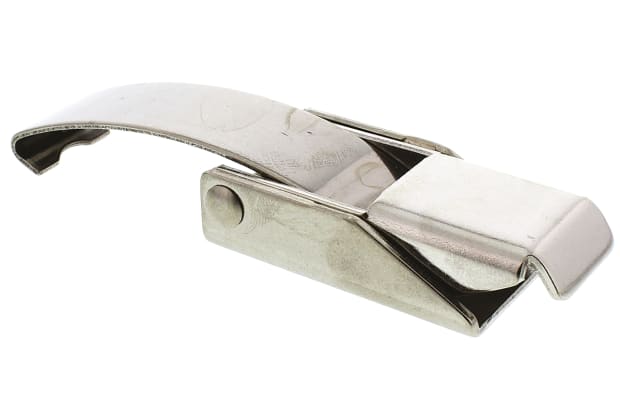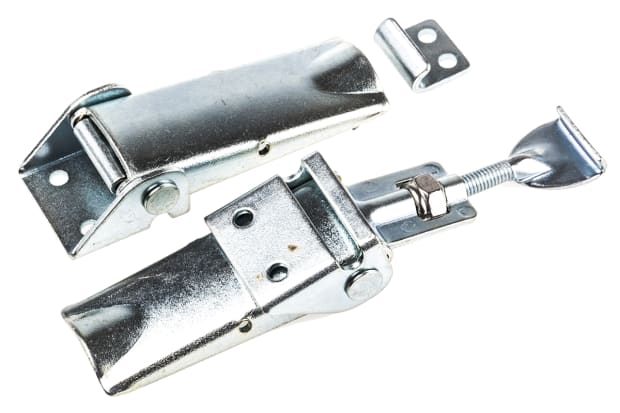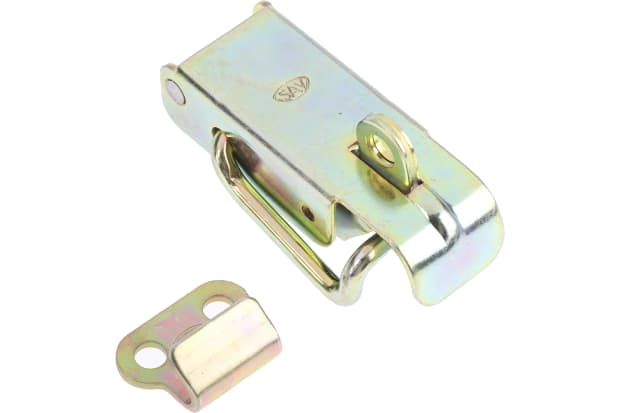- Published 8 Mar 2023
- Last Modified 29 Aug 2023
- 7 min
The Complete Guide to Toggle Latches
Our guide explores what toggle latches are and what they’re used for, then shares the different types available.

What are Toggle Latches?
Toggle latches are a handy method of securely closing and fastening lids, doors and panels quickly and easily, while allowing for convenient access whenever you need to reopen them. Other common names for the toggle catch include over-centre fasteners, spring claw latches, and draw latches.
As well as being reliable, robust and highly stable fasteners when in a closed or locked position, the toggle catch is also very user-friendly. This is because it offers fuss-free, quick-release opening within a second or two - usually requiring only a single hand to flip back the latch.
Toggle latches can come with or without catch plates, strikes or split pins as optional features for helping to secure the closed latch. They are available in a diverse selection of models and configurations, including:
- Solid latches
- Safety release latches
- Adjustable latches
- Spring and return spring latches
- Locking latches
Thanks to their unique combination of long-term dependability and ease of access, toggle latches are often seen on transport cases, toolboxes and other similarly high-load containers, as well as on various types of machinery and equipment safety panels or cabinet enclosures.
How Do Toggle Latches Work?
Toggle latches are built with a specially calibrated cam action that guarantees sturdy locking when fully closed. This can provide resistance to some impressively strong forces on higher-end industrial varieties. However, it’s common even on these models to see a built-in spring-loaded lever action which means that little user effort is needed to flip the catch back open when needed.
The cam action on a toggle latch is calibrated such that a moderate amount of force is required to overcome the cam resistance when folding the catch open or closed. Either side of this peak resistance point in the cam mechanism, the catch will move relatively easily back and forth. Once manoeuvred beyond the cam, the toggle latch will snap soundly into place and remain securely closed. Precisely how much force is required to open or close a given toggle latch depends largely on three factors - namely the size of the cam’s ‘bump’, the tension in the spring or clip, and the length of the handle attached to the mechanism.
Longer handles will typically require less force than shorter ones to overcome the equivalent cam calibration. This is because they provide the user with a more effective quick-release pivot through which to transfer force along the opening and closing mechanisms.
As mentioned above, some types of toggle latch are fully lockable to prevent against both accidental and nuisance tampering, and many types come with catch plates or split pins to help secure the closed latch against unintentional opening caused by excessive vibration.

Types of Toggle Latches
There are many different types of toggle latch available, each with their own unique appearance and characteristics. Learn more about the varying toggle catch types below:
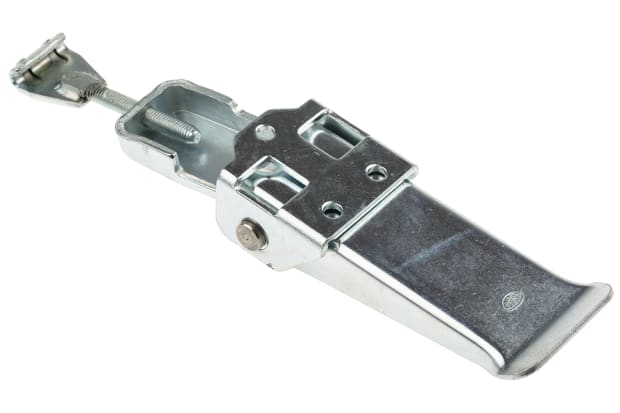
Adjustable Toggle Latches
Adjustable toggle latches usually feature a threaded rod linking the hook or ‘claw’ to the fastening plate, meaning that their positions can be adjusted relative to one another.
This allows for additional tensioning - i.e. tightening or loosening - of the core cam-lock mechanism. In turn, this makes the toggle latch more or less easy to manoeuvre into or out of a closed position.
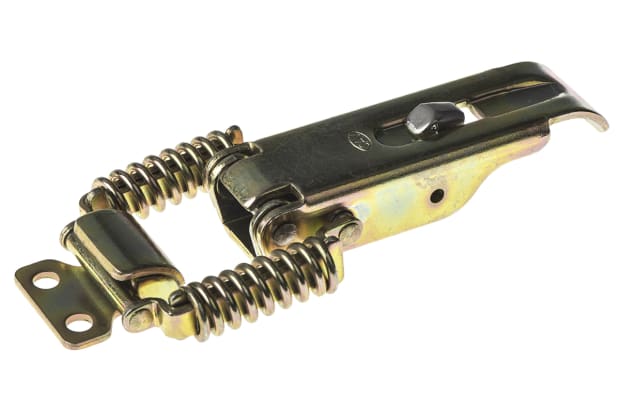
Spring-Loaded Toggle Latches
A spring-loaded toggle latch, sometimes known as a spring claw toggle latch, includes a tightly wound metal spring as a core part of the cam system.
This makes the product smoother and more convenient to install and use by offering wider positional tolerances than non-sprung versions. It also helps with additional opening and closing forces for overall ease of operation.

Lockable Toggle Latches
A lockable toggle latch is an ideal option when you need to ensure that a panel, hatch, cabinet or case won’t be accidentally or deliberately opened, either through intentional tampering or as a result of exposure to excessive vibration.
Locking toggle latches tend to be medium-to-heavy duty and can be supplied either with or without the actual locking hardware itself.
Toggle Latch Uses
Toggle latches for industrial and commercial applications are generally calibrated for resistance to either light, medium or heavy-duty forces. A good rule of thumb when choosing a toggle latch is to aim for a UTS (ultimate tensile strength) rating that is roughly double the force that the latch will be subjected to, in order to ensure it is appropriately weighted.
Bear in mind that it is equally important for the catch or strike plate that the latch hooks around - if the particular model in question comes with one - to be rated at the same strength as the latch itself. If you're unsure, it's recommended to double check this before buying.
Some typical uses for toggle latches or other toggle catch types might include:
- Toolboxes and travel cases
- Flaps and container lids
- Industrial tool cabinets and machinery covers
- Engine panels and valve boxes
- Exhaust vents
- Ductwork and banding
- Clamps and holders
As explained above, toggle latches can often be split into three different categories:
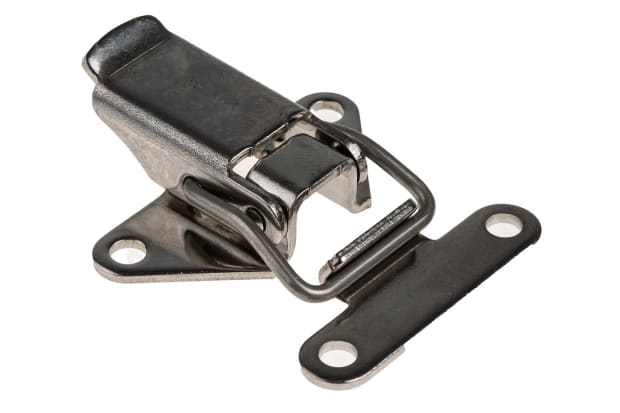
Lightweight Toggle Latches
- Lightweight toggle latches or clamps are commonly used on flaps, boxes and cabinets that need only relatively simple protection against accidental opening, and that aren’t typically subject to excessive vibration or force
- They tend to be the most cost-effective of all toggle latch types, are usually much smaller and more discreet than heavier duty versions, and require considerably less user effort to push into open or closed positions
- They are often seen on case lids and non-hazardous instrument panels

Mediumweight Toggle Latches
- Mediumweight toggle latches offer increased resistance to vibration and other forms of accidental opening, making them better suited to more robust or demanding applications such as travel cases and toolboxes
- Mediumweight latches and catches are often spring-loaded for increased manoeuvrability on the go
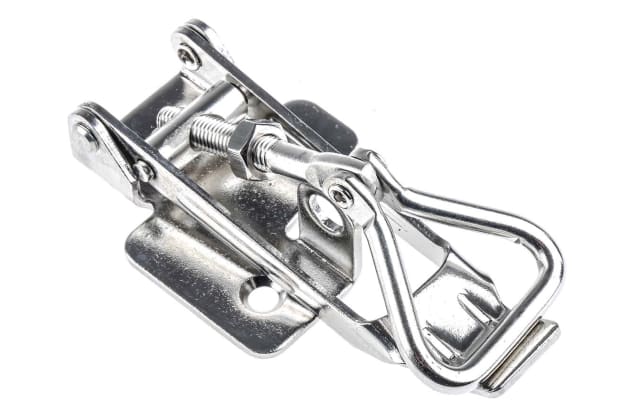
Heavy-Duty Toggle Latches
- Heavy-duty toggle latches offer the strongest resistance to accidental opening or tampering and are often lockable for added security
- They are most commonly seen on machinery panels concealing moving or otherwise hazardous parts, as well as on a wide range of larger industrial panels and cabinets
- Heavy-duty toggle latches and catches tend to be more expensive than other types, but frequently come with additional features such as advanced shock and vibration resistance
- They are most often made from steel or a mixture of steel and other materials
Toggle Latch Materials
Toggle latches are available in wide selection of materials and finishes, offering varying combinations of durability and ease of use in a range of applications and environments.
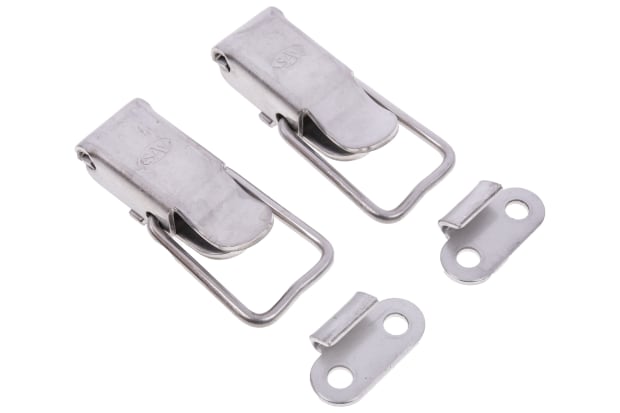
Stainless Steel Toggle Latches
Stainless steel is a common material for toggle latches, as it offers advanced durability in outdoor conditions, particularly when electro polished for increased protection against corrosion.
This material is particularly widely used in heavier-duty components intended for use in demanding industrial environments.
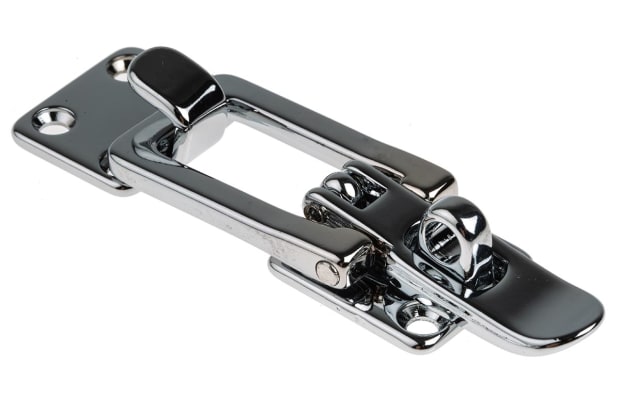
Brass Toggle Latches
Brass toggle latches can be chosen for the material's appearance if a particular aesthetic is desired, but they are more frequently supplied as chrome-plated brass fittings for general use.
In light-to-medium duty roles, this gives brass toggle catches excellent anti-corrosive properties and makes them suitable for a range of ‘clean’ industries and scenarios, such as food or chemical applications.
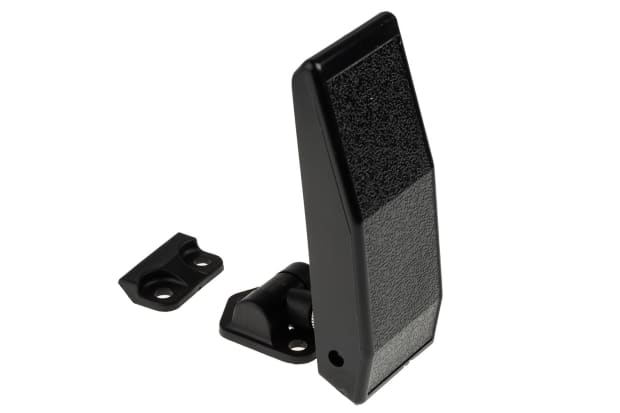
Acetal Toggle Latches
Acetal toggle latches offer superb tensile strength, surface hardness and resistance to a wide range of chemicals - including robust performance against hydrolysis, strong alkalis and thermal-oxidative degradation.
Acetal and polyacetal are types of crystalline engineering thermoplastics, used in the manufacture of precision parts requiring high stiffness, low friction, and excellent dimensional stability. They are often used in combination with styrene rubber, fibreglass elements, polypropylene resins, and other polyamides such as nylon to make toggle latches with impressive strength and rigidity.
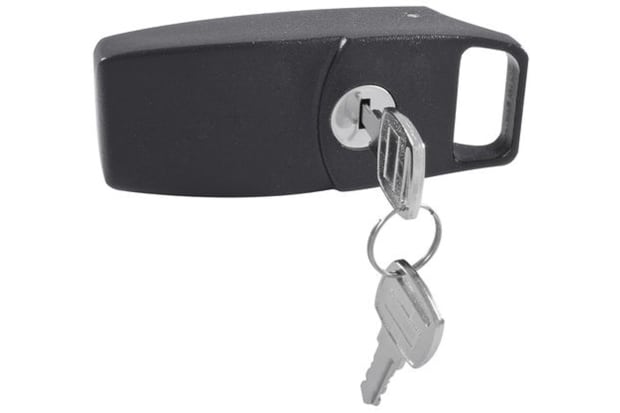
Die-Cast Toggle Latches
Die-cast toggle latches tend to be cost-effective and well-manufactured, with high-quality surface finishes and excellent dimensional consistency.
Die-cast zinc is a particularly common material used in lockable toggle latches and catches.
Popular Toggle Latch Brands
Checking for quality is essential when selecting a product, but it is also important to do your research thoroughly before deciding which toggle latch is best for you.
Some popular toggle latch brands are outlined below.
Steinbach & Vollman
Steinbach & Vollman toggle latches are designed and manufactured to industry-leading standards of quality and durability.
Southco
Southco is a well-known speciality industrial fastener company, manufacturing to the highest standards.
Pinet
Pinet toggle latches reflect the company’s certification for superb manufacturing quality and consistency.
RS Pro
With a wide range of operating tensions, you can be sure to select the most appropriate and safest toggle latch for your needs with RS Pro.

